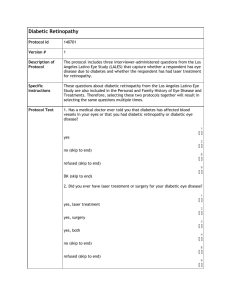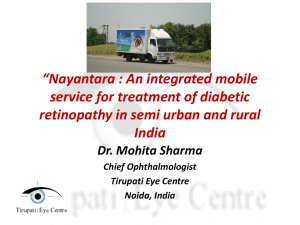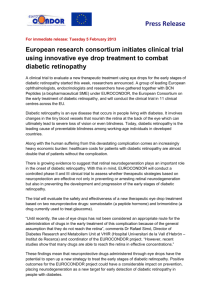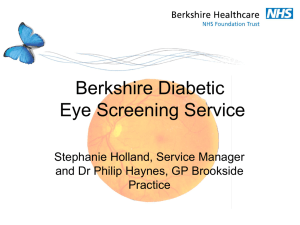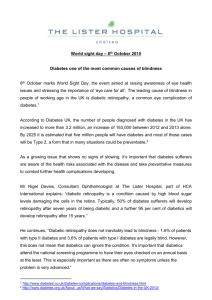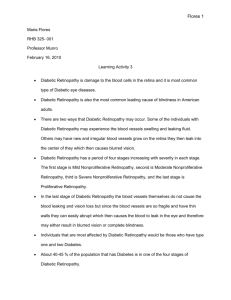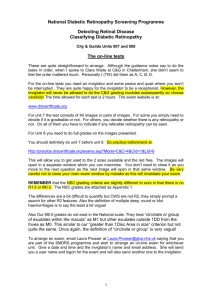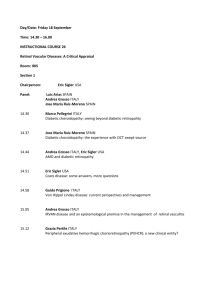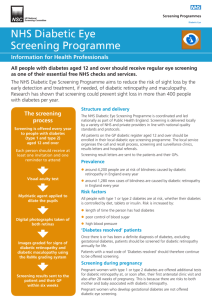Routine Screening for Diabetic Retinopathy
advertisement
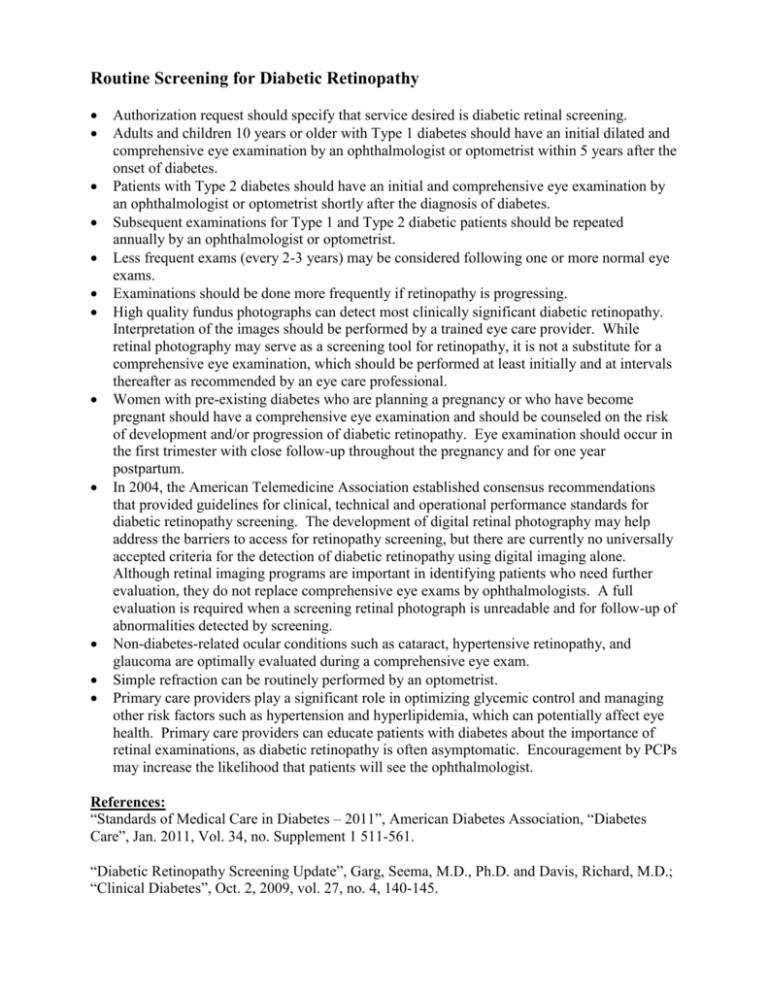
Routine Screening for Diabetic Retinopathy Authorization request should specify that service desired is diabetic retinal screening. Adults and children 10 years or older with Type 1 diabetes should have an initial dilated and comprehensive eye examination by an ophthalmologist or optometrist within 5 years after the onset of diabetes. Patients with Type 2 diabetes should have an initial and comprehensive eye examination by an ophthalmologist or optometrist shortly after the diagnosis of diabetes. Subsequent examinations for Type 1 and Type 2 diabetic patients should be repeated annually by an ophthalmologist or optometrist. Less frequent exams (every 2-3 years) may be considered following one or more normal eye exams. Examinations should be done more frequently if retinopathy is progressing. High quality fundus photographs can detect most clinically significant diabetic retinopathy. Interpretation of the images should be performed by a trained eye care provider. While retinal photography may serve as a screening tool for retinopathy, it is not a substitute for a comprehensive eye examination, which should be performed at least initially and at intervals thereafter as recommended by an eye care professional. Women with pre-existing diabetes who are planning a pregnancy or who have become pregnant should have a comprehensive eye examination and should be counseled on the risk of development and/or progression of diabetic retinopathy. Eye examination should occur in the first trimester with close follow-up throughout the pregnancy and for one year postpartum. In 2004, the American Telemedicine Association established consensus recommendations that provided guidelines for clinical, technical and operational performance standards for diabetic retinopathy screening. The development of digital retinal photography may help address the barriers to access for retinopathy screening, but there are currently no universally accepted criteria for the detection of diabetic retinopathy using digital imaging alone. Although retinal imaging programs are important in identifying patients who need further evaluation, they do not replace comprehensive eye exams by ophthalmologists. A full evaluation is required when a screening retinal photograph is unreadable and for follow-up of abnormalities detected by screening. Non-diabetes-related ocular conditions such as cataract, hypertensive retinopathy, and glaucoma are optimally evaluated during a comprehensive eye exam. Simple refraction can be routinely performed by an optometrist. Primary care providers play a significant role in optimizing glycemic control and managing other risk factors such as hypertension and hyperlipidemia, which can potentially affect eye health. Primary care providers can educate patients with diabetes about the importance of retinal examinations, as diabetic retinopathy is often asymptomatic. Encouragement by PCPs may increase the likelihood that patients will see the ophthalmologist. References: “Standards of Medical Care in Diabetes – 2011”, American Diabetes Association, “Diabetes Care”, Jan. 2011, Vol. 34, no. Supplement 1 511-561. “Diabetic Retinopathy Screening Update”, Garg, Seema, M.D., Ph.D. and Davis, Richard, M.D.; “Clinical Diabetes”, Oct. 2, 2009, vol. 27, no. 4, 140-145.



